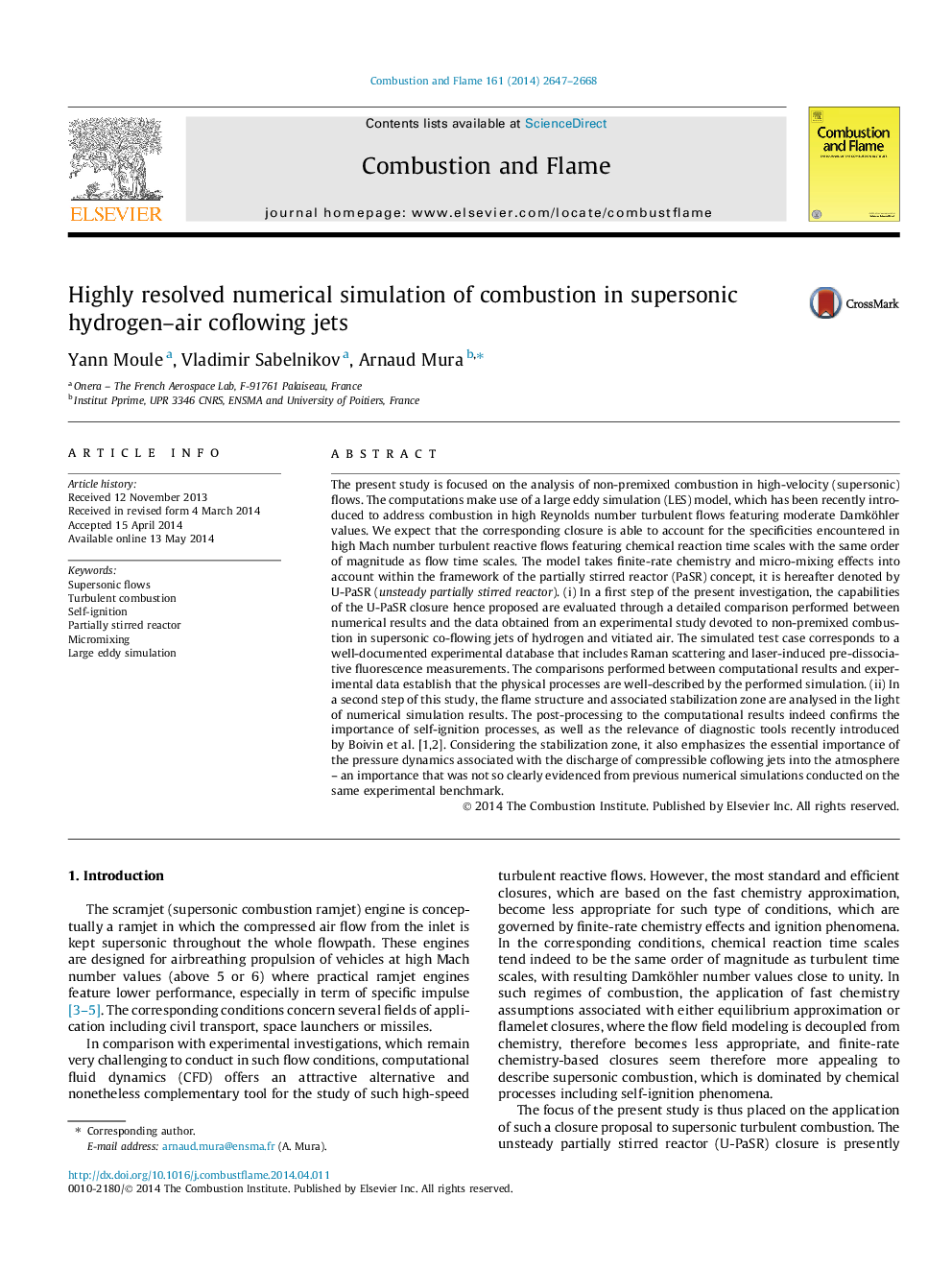| کد مقاله | کد نشریه | سال انتشار | مقاله انگلیسی | نسخه تمام متن |
|---|---|---|---|---|
| 169584 | 458019 | 2014 | 22 صفحه PDF | دانلود رایگان |
The present study is focused on the analysis of non-premixed combustion in high-velocity (supersonic) flows. The computations make use of a large eddy simulation (LES) model, which has been recently introduced to address combustion in high Reynolds number turbulent flows featuring moderate Damköhler values. We expect that the corresponding closure is able to account for the specificities encountered in high Mach number turbulent reactive flows featuring chemical reaction time scales with the same order of magnitude as flow time scales. The model takes finite-rate chemistry and micro-mixing effects into account within the framework of the partially stirred reactor (PaSR) concept, it is hereafter denoted by U-PaSR (unsteady partially stirred reactor). (i) In a first step of the present investigation, the capabilities of the U-PaSR closure hence proposed are evaluated through a detailed comparison performed between numerical results and the data obtained from an experimental study devoted to non-premixed combustion in supersonic co-flowing jets of hydrogen and vitiated air. The simulated test case corresponds to a well-documented experimental database that includes Raman scattering and laser-induced pre-dissociative fluorescence measurements. The comparisons performed between computational results and experimental data establish that the physical processes are well-described by the performed simulation. (ii) In a second step of this study, the flame structure and associated stabilization zone are analysed in the light of numerical simulation results. The post-processing to the computational results indeed confirms the importance of self-ignition processes, as well as the relevance of diagnostic tools recently introduced by Boivin et al. [1,2]. Considering the stabilization zone, it also emphasizes the essential importance of the pressure dynamics associated with the discharge of compressible coflowing jets into the atmosphere – an importance that was not so clearly evidenced from previous numerical simulations conducted on the same experimental benchmark.
Journal: Combustion and Flame - Volume 161, Issue 10, October 2014, Pages 2647–2668
